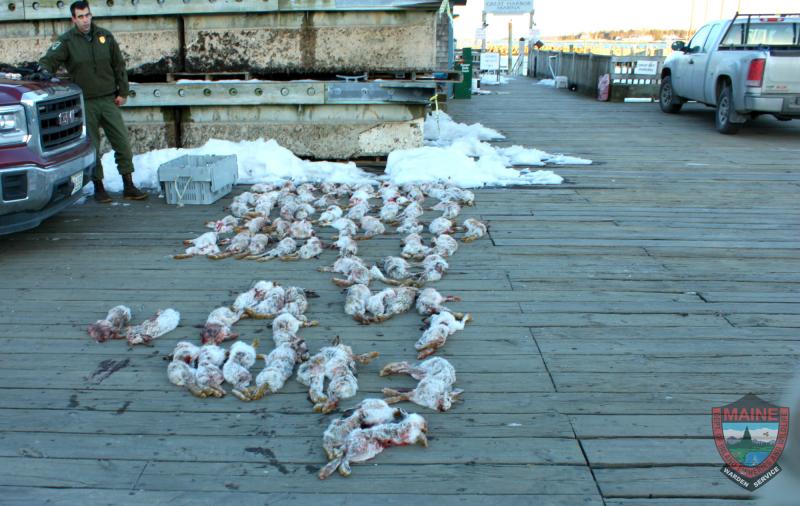FRENCHBORO — With all the news this winter surrounding Maine's busy snowmobiling season, Maine's game wardens remain diligent about conserving the state’s natural resources, according to Corp. John McDonald, public relations officer with the Maine Warden Service. In a release, McDonald said that five hunters from Massachusetts, and one from Maine, were apprehended March 18 for killing 67 snowshoe hares over their limit.
Working on a tip, a team of Maine game wardens, Maine Marine Patrol officers and U.S. Fish and Wildlife agents closed in on the group, who had been hunting on Great Duck Island Saturday.
“Upon inspecting them, the hunters were found to be 67 snowshoe hares over their daily bag limit,” said the release. “In total, the group of six had killed 87 hares during their day of hunting. One individual was also summonsed for hunting without a license.”
Great Duck Island is in the town limits of Frenchboro, and is approximately a 10-mile boat ride from Southwest Harbor. The Island is owned by the Nature Conservancy.
Summonsed were:
• Andrew Mays, 52, from Southwest Harbor (10 snowshoe hare over limit)
• Carlos Almeida, 47, from Acushnet, Mass., (hunting without a license, 10 snowshoe hare over limit)
• Abilio Fernandes, 61, from New Bedford, Mass., (10 snowshoe hare over limit)
• Luis Fidalgo, 52, from North Dartmouth, Mass., (10 snowshoe hare over limit)
• Antonio Fidalgo, 54, from Acushnet, Mass., (10 snowshoe hare over limit)
• Antonio Borges, 69, from Acushnet, Mass., (10 snowshoe hare over limit)
College of the Atlantic in Bar Harbor shares the 220-acre island with the Nature Conservancy, the State of Maine, and a private summer resident. COA owns approximately 12 acres, consisting of the original light-station property, which includes the old Head Keeper's House, two boathouses, and the actual lighthouse, which was constructed at the end of the 19th century.
According to the COA website: “Great Duck supports some of the largest known breeding populations of Leach's storm petrels and black guillemots in the Lower 48. These, along with resident herring and black-backed gulls, are subjects of on-going research by teams of students from the College's Island Research Center, under the supervision of faculty member John Anderson. Of major concern is the island's large population of varying [snowshoe] hare, a species that was introduced in the mid-20th century, and has had an enormous impact on the island's flora.”
The varying/snowshoe hare has large feet and a white coat in the winter, which turns brown in the summer.


























